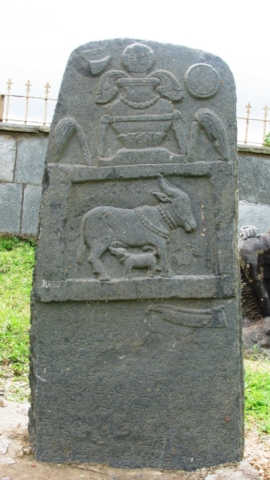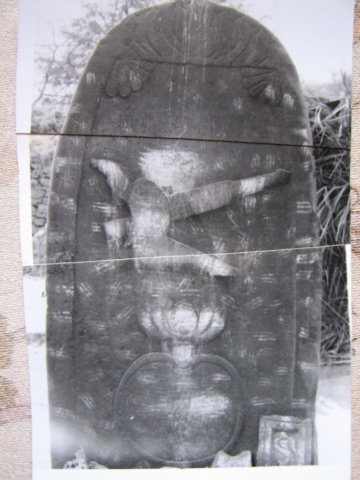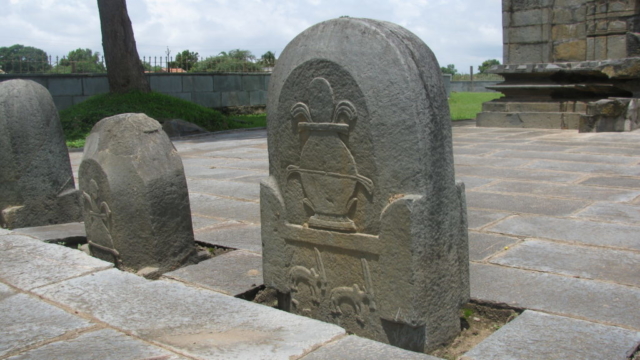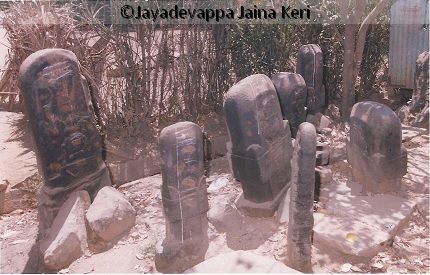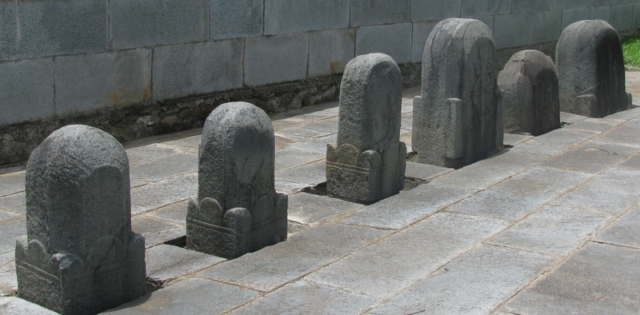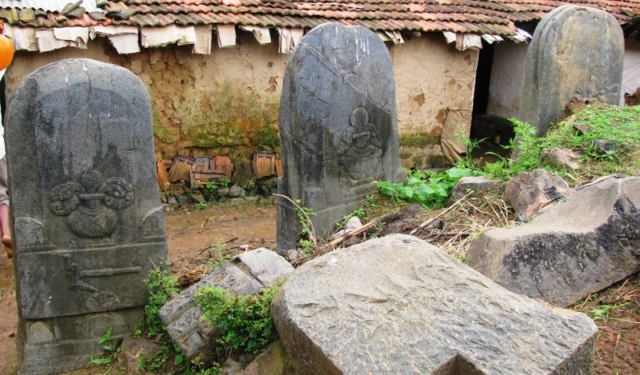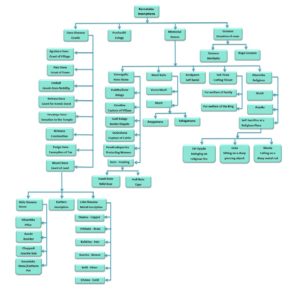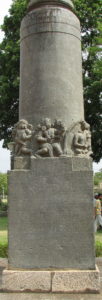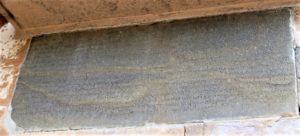This picture shows the classification of inscriptions found in Karnataka.
Dana Shasana – Grant Inscription
Bhumi Dana – Grant of land
This is the most common of grants records found in Karnataka. In ancient times, King was owner of all the land in his territory; he liberally donated land as a welfare measure to learned Brahmans, to temples and others and such grants recorded on stones are called as Land grant Inscriptions and such granted land was marked by boundaries with location marks. There are various types of Bhumi-Dana Shasanas and are classified based on the material on which they are inscribed. Please click here to view the details and the pictures of different types of Bhumi Dana shasanas. To dine the boundary of the donated land, the boundary stones or Gadi Kallu were installed at the edges. If the land was donated to Shaivas, Linga Mudre Kallu was installed and land donated for Vaishnavas for marked by Vamana Mudre Kallu.
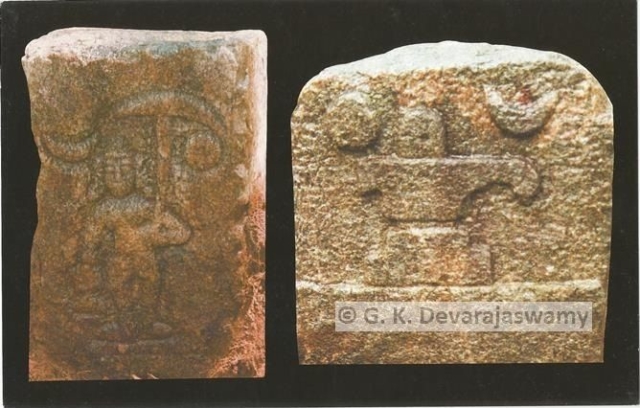
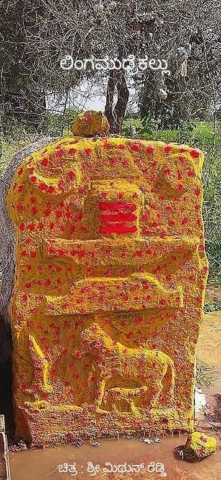
Agrahara Dana – Gift of villages
In ancient and medieval south India, Kings established residential quarters for Learned Brahmans who were well versed in four Vedas. King donated the en-marked set of villages and its revenue for the upkeep and continues posterity of their knowledge. Such village was under the ownership of the donee and was exempted from all types of taxes. There are references to an existing village converted into an Agrahara. Royal family mostly Kings or Queens made such grants. Most of the copper plate grants fall under this category.
Pura Dana – Gift of Town
Pura means a town, As Agrahara was meant for learned Brahmans, Pura was meant for non-Brahminical sects like, Veerashaiva, Priests, Jains, Bairagis, Fakirs etc,. Pura grant was made by a king or by his nobility after seeking his permission. These villages were exempted from some taxes and not all taxes. A Pura is existing village converted or newly created settlement by the ordinance of the King or by a senior Official. People residing in such residential quarters enjoyed certain privileges like, if a person residing or wishes to reside in such locality they were let off, even, when they committed some heinous criminal act or even a murder ( Example: hindwadi inscription?)
Umbali Dana
This land or villages grant was mainly given by King or a senior official to the Non- Brahman Agricultural Community. A person who received such grant was very much part of the administration of that village, this system prevailed in late Vijayanagara Period.
Nettaru Koduge or Grant given for Heroic Deed
Nettaru Blood Grant of land given to heroic person who participated in the war waged by the King and was instrumental for the triumph in battle field. Such persons was rewarded with grant of land for their heroic role played in the battled in subduing the enemy.
Devalaya Dana – Donation to the Temple
In the history of Karnataka we find every village consisted of a village deity and there are villages having with multiple temples. After 14th century, we find every individual caste and community had a temple clearly showing the importance of temple in the community and was centro of all social activity. After the construction of a temple, King or his subordinate or Village Head or a Brahman donated land for the newly constructed temple for the maintenance of the temple, like offering daily worship, feeding the devotees, ascetics and students residing in temple and for the repair of the temple. Merchants and traders also donated liberally for such activities.
Nirmana – Construction of temples, lakes, wells
Terige Dana – Exemption of tax
This grant was given to persons who were involved in providing welfare measures for the common public, like construction of tank, well, dam or temple. King or his subordinate officers usually donated the land for such purposes. Merchants or traders were wealthy and usually such trading communities organized guilds and donated money liberally for such welfare measures. In Karnataka, we find many inscriptions in such nature with reference as charity by Vyaparis (traders).
Prashasthi Records – Eulogies
They praise the kings and officials and are usually written by the court poet.
Some of the very rare inscriptions come under this category. Such inscriptions give the eulogy of a King and does not mention any grant. One of the finest examples of such inscriptions is the Allahabad Pillar Inscriptions issued by Sumudra Gupta of Gupta Dynasty. Aihole Inscriptions issused by Chalukyan King Pulikeshi –II is one such inscription found in Karnataka. A rare Kannada script and language inscription found in Jura village in Satna District, Madhya Pradesh, this is a very good example where it eulogizes the Krishna –III of Rashtarakuta Dynasty.
Memorial Stones
Best of inscriptions found in Karnataka are Memorial Stones. They are very unique to Karnataka and the varieties in them are stupendous and are found no where else in whole of India. Some of them are also found outside the state, in territories which were part of dynasties of karnataka. Memorial stones depict a heroic story and are with or without inscriptions. Hero stones are memorial stones erected in memory of heroes who died in a battle field while defending kings, or defending the cattle or women in distress.
Visit the page Memorial Stones for learn about different types of Memorial Stones.
Gosaasa ಗೋಸಾಸ
These stones were installed to denote the donation of cows. Some varieties in this category can be seen installed in a place to define its existence. These were installed to declare progression of a ದೊಡ್ಡಿ- doddi – barn to a village fit for settlement. Typically a place used to be declared as a village if it contained a place of worship-temple, and a lake to sustain livelihood of people. These stones typically have a plough and a lotus etched on them. You can find Gosaasa stones arranged in a matrix grouped in numbers like 3, 6, 9, 12. Gosaasa inscriptions are classified as Gosaasa and Metikallu, Naga Gosaasa
